Finding Wholeness in an Overwhelmed World: Tips and Strategies
.jpg)
Finding wholeness in an overwhelmed world can be challenging, especially in today's fast-paced society where people are constantly bombarded with information and distractions. Many individuals struggle to balance their personal and professional lives, leading to feelings of stress, anxiety, and burnout. However, there are ways to achieve a sense of wholeness and balance in life, even amidst the chaos.
One approach to finding wholeness is to focus on self-care and personal growth. This involves taking time to prioritize one's physical, emotional, and spiritual well-being. It may include activities such as exercise, meditation, therapy, or pursuing hobbies and interests. By investing in oneself, individuals can improve their overall quality of life and feel more grounded and centered.
Another key aspect of finding wholeness is to identify and align with one's values and purpose. This involves reflecting on what truly matters in life and working towards goals that are meaningful and fulfilling. When individuals have a clear sense of direction and purpose, they are better able to make decisions that align with their values and lead to a sense of satisfaction and fulfillment.
The Journey Towards Wholeness
Understanding the Concept of Wholeness
Wholeness is a state of being complete or undivided. It is a sense of inner peace and satisfaction that comes from living a life that is true to oneself. To achieve wholeness, one must integrate all aspects of their being, including their physical, emotional, mental, and spiritual selves. This involves developing a deep understanding of oneself, identifying one's values, and aligning one's actions with those values.
Wholeness is not a destination but a journey. It is a continuous process of growth and self-discovery. It requires one to be open to change, to embrace challenges, and to learn from experiences. The journey towards wholeness can be challenging, but it is also rewarding. It allows one to live a more authentic and fulfilling life.

The Importance of the Journey
The journey towards wholeness is important because it helps individuals to discover their purpose and aspirations in life. It allows them to live a life that is true to themselves and to their values. It also helps individuals to develop a sense of resilience and inner strength that can help them navigate through difficult times.
The journey towards wholeness can take many forms. It may involve exploring one's spirituality, developing healthy habits, pursuing personal interests, or seeking out new experiences. It may also involve seeking out support from others, such as friends, family, or a therapist.
In conclusion, the journey towards wholeness is an ongoing process that involves integrating all aspects of oneself and aligning one's actions with one's values. It is a journey that requires openness to change, a willingness to learn from experiences, and a commitment to personal growth. The journey towards wholeness can be challenging, but it is also rewarding and can lead to a more authentic and fulfilling life.
Overcoming the Overwhelm
Feeling overwhelmed is a common experience in today's fast-paced world. However, it can be challenging to find wholeness when you are struggling with this feeling. In this section, we will explore how to recognize overwhelm and provide six tips to manage it.
Recognizing Overwhelm
The first step in overcoming overwhelm is to recognize it. Overwhelm can manifest in many ways, including feeling stressed out, anxious, or unable to focus. It can also lead to physical symptoms such as headaches, fatigue, and digestive issues.
Recognizing overwhelm is important because it allows you to take action before it becomes too much to handle. Some common causes of overwhelm include having too much on your plate, feeling like you have no control over your life, or trying to meet unrealistic expectations.
Six Tips to Manage Overwhelm
-
Prioritize: When you have too much on your plate, it can be helpful to prioritize your tasks. Make a list of what needs to be done and then rank them in order of importance. This will help you focus on what is most critical and reduce the feeling of overwhelm.
-
Practice Self-Care: Taking care of yourself is essential when you are feeling overwhelmed. This can include getting enough sleep, eating a healthy diet, and engaging in regular exercise. Self-care can also involve taking breaks throughout the day to relax and recharge.
-
Set Boundaries: It's essential to set boundaries to prevent overwhelm. This can include saying no to commitments that don't align with your priorities or values. It can also involve limiting your exposure to stressful situations or people.
-
Simplify: Simplifying your life can help reduce overwhelm. This can include decluttering your space, simplifying your schedule, or reducing your social media use. Simplifying can help you focus on what is most important and reduce distractions.
-
Practice Mindfulness: Mindfulness can help you manage overwhelm by bringing your attention to the present moment. This can include meditation, deep breathing, or simply taking a few moments to focus on your surroundings.
-
Seek Support: Finally, it's essential to seek support when you are feeling overwhelmed. This can include talking to a trusted friend or family member, seeking professional help, or joining a support group.
By recognizing overwhelm and implementing these six tips, you can manage the feeling of overwhelm and find wholeness in an overwhelmed world.
The Role of Mind, Body, and Spirit
In today's fast-paced and overwhelming world, finding wholeness can be challenging. However, it is essential to balance the mind, body, and spirit to achieve a happy and fulfilled life. Each of these elements plays a crucial role in achieving overall wellness.
Mind: The Power of Focus
The mind is a powerful tool that can either work for or against an individual. It is essential to cultivate a positive mindset and focus on the present moment. This can be achieved through mindfulness practices such as meditation, deep breathing, and yoga. By focusing on the present moment, an individual can reduce stress and improve their mental well-being.
Body: Physical Health and Energy
The body is the physical vessel that carries an individual through life. Taking care of the body is essential to achieve overall wellness. This can be achieved through regular exercise, a healthy diet, and adequate sleep. Exercise not only improves physical health but also releases endorphins that boost mood and energy levels. A healthy diet provides the body with the necessary nutrients to function optimally, while adequate sleep allows the body to rest and recharge.
Spirit: Finding Peace and Joy
The spirit is the essence of a person's being, and it is essential to nurture it to achieve overall wellness. This can be achieved through spiritual practices such as prayer, meditation, and gratitude. By cultivating a sense of peace and joy within, an individual can reduce stress and improve their mental and emotional well-being.
In conclusion, achieving overall wellness requires a balance of the mind, body, and spirit. By focusing on mindfulness practices, physical health, and spiritual practices, an individual can achieve wholeness in an overwhelmed world.
Emotional and Social Aspects of Wholeness
Understanding Your Emotions
Emotions play a crucial role in our daily lives. Understanding your emotions is a vital aspect of finding wholeness in an overwhelmed world. It is essential to acknowledge and accept your emotions, whether positive or negative, to achieve emotional completeness. Suppressing emotions can lead to anxiety, depression, and other mental health issues.
To understand your emotions, you need to identify them and express them in a healthy way. You can do this by journaling, talking to a trusted friend or family member, or seeking professional help from a therapist. Once you have identified your emotions, you can work on managing them through techniques such as mindfulness, meditation, and deep breathing exercises.
Building Healthy Relationships
Building healthy relationships is another crucial aspect of finding wholeness in an overwhelmed world. Social support is essential for emotional well-being and can help reduce stress levels. Healthy relationships can provide a sense of belonging, love, and support, which are necessary for emotional completeness.
To build healthy relationships, you need to be open and honest with your loved ones. Communication is the key to any healthy relationship. It is essential to express your thoughts and feelings in a constructive way and to listen actively to your loved ones. Building trust and respect is also crucial for healthy relationships. You can do this by being reliable, keeping your promises, and respecting your loved ones' boundaries.
In conclusion, finding wholeness in an overwhelmed world requires a focus on emotional and social aspects. Understanding your emotions and building healthy relationships are essential for achieving emotional completeness. By acknowledging and expressing your emotions in a healthy way and building healthy relationships, you can achieve a sense of balance and harmony in your life.
The Importance of Self-Care and Discipline
Finding wholeness in an overwhelmed world can be challenging. This is why it is important to prioritize self-care and discipline. Self-care is the practice of taking care of one's physical, emotional, and mental health. Discipline is the ability to consistently adhere to a set of rules or principles. Together, self-care and discipline can help individuals achieve a greater sense of well-being and balance.

Practicing Self-Care
Self-care is essential for maintaining good health and preventing burnout. It involves taking time to prioritize one's physical, emotional, and mental needs. This can include activities such as exercise, meditation, spending time in nature, or simply taking a break to relax and recharge. By prioritizing self-care, individuals can reduce stress, improve their mood, and boost their overall sense of well-being.
Developing Discipline
Discipline is another important aspect of finding wholeness in an overwhelmed world. It can be challenging to consistently adhere to a set of rules or principles, but doing so can help individuals achieve their goals and maintain a sense of balance. Developing discipline can involve setting clear goals, creating a routine, and holding oneself accountable for following through on commitments. By developing discipline, individuals can build resilience and increase their ability to handle stress.
Rest
Rest is another essential component of self-care and discipline. It is important to take breaks, get enough sleep, and allow oneself time to relax and recharge. Rest can help individuals reduce stress, improve their mood, and increase their overall sense of well-being. By prioritizing rest, individuals can increase their productivity and reduce the risk of burnout.
In conclusion, finding wholeness in an overwhelmed world can be challenging, but prioritizing self-care and discipline can help. By practicing self-care, developing discipline, and prioritizing rest, individuals can achieve a greater sense of balance and well-being.
Dealing with Disappointment and Criticism
Handling Disappointment
Dealing with disappointment can be challenging, especially in an overwhelmed world. Disappointment can lead to feelings of sadness, loss, and discomfort. It can create a painful gap between our expectations and reality [1]. However, it is important to learn how to handle disappointment in a healthy way to avoid negative consequences.
One way to handle disappointment is to acknowledge and accept the feelings associated with it. It is okay to feel disappointed, and it is important to allow yourself to feel the emotions associated with it. It is also helpful to reframe the situation and look for the positive aspects. For example, if someone did not get a job they were hoping for, they can focus on the skills and experience they gained through the interview process [1].
Another way to handle disappointment is to practice self-care. This can include activities such as exercise, meditation, or spending time with loved ones. It is important to take care of oneself both physically and mentally to avoid falling into a negative spiral of disappointment.
Responding to Criticism
Criticism can also be difficult to handle, especially if it is unfair or unjustified. However, it is important to learn how to respond to criticism in a healthy way to avoid negative consequences. One way to respond to criticism is to listen carefully to the feedback and try to understand where it is coming from. It is important to avoid becoming defensive and instead try to see the situation from the other person's perspective [3].
Another way to respond to criticism is to use it as an opportunity for growth and improvement. Criticism can be a valuable tool for learning and development. Instead of taking it personally, it is important to try to learn from it and use it to improve oneself or one's work [2].
It is also important to set boundaries when responding to criticism. It is okay to respectfully decline criticism that is hurtful or unfair. It is important to communicate clearly and assertively to ensure that one's boundaries are respected [3].
In conclusion, dealing with disappointment and criticism can be challenging, but it is important to learn how to handle them in a healthy way. By acknowledging and accepting one's feelings, practicing self-care, listening carefully to feedback, using criticism as an opportunity for growth, and setting boundaries, one can learn to respond to disappointment and criticism in a positive way.
Sources:
- Psychology Today
- The Ladders
- Indeed
Strategic Planning for Wholeness
Setting Realistic Expectations
When it comes to finding wholeness in an overwhelmed world, setting realistic expectations is crucial. Unrealistic expectations can lead to disappointment, frustration, and even burnout. It is important to understand that finding wholeness is a journey, and it takes time and effort.
One way to set realistic expectations is to start small. Instead of trying to change everything at once, focus on making small changes that can lead to big results over time. For example, start by incorporating mindfulness practices into your daily routine, such as taking a few minutes to meditate or practicing deep breathing exercises.
Another way to set realistic expectations is to be kind to yourself. Recognize that you are doing the best you can, and that it is okay to make mistakes. Remember that finding wholeness is not about being perfect, but about making progress and learning from your experiences.
Strategic Planning for Success
Strategic planning can help you achieve your goals and find wholeness in an overwhelmed world. One way to create a strategic plan is to start by defining your goals. What does wholeness mean to you? What specific areas of your life do you want to improve?
Once you have defined your goals, create a plan of action. Break your goals down into smaller, manageable steps, and create a timeline for achieving them. Consider using a planner or calendar to help you stay organized and on track.
It is also important to identify potential obstacles and develop strategies for overcoming them. For example, if you struggle with finding time for self-care, consider scheduling it into your daily routine or enlisting the help of a friend or family member.
By setting realistic expectations and creating a strategic plan for success, you can find wholeness in an overwhelmed world. Remember to be kind to yourself, and celebrate your progress along the way.
The Role of Personal Development
In an overwhelmed world, finding wholeness can be challenging. Personal development is an essential tool that can help individuals achieve balance and harmony in their lives. Personal development involves self-assessment and growth, celebrating successes, and continuous learning.
Self-Assessment and Growth
Personal development starts with self-assessment. Individuals need to take the time to reflect on their strengths, weaknesses, values, and goals. Self-assessment helps individuals identify areas in their lives that need improvement and areas that they excel in. It also helps individuals set realistic goals and develop a plan to achieve them.
Growth is an essential aspect of personal development. Individuals need to be willing to learn and grow continuously. Personal growth involves stepping out of one's comfort zone, taking calculated risks, and embracing new challenges. Growth is a continuous process that requires commitment, dedication, and hard work.
Celebrating Successes
Celebrating successes is an essential part of personal development. Individuals need to acknowledge and celebrate their achievements, no matter how small they may be. Celebrating successes helps individuals build confidence, motivation, and a sense of accomplishment. It also helps individuals stay focused and motivated to achieve their goals.
Celebrating successes can take many forms, such as treating oneself to a favorite meal, taking a day off, or sharing the achievement with loved ones. Celebrating successes helps individuals appreciate their hard work and motivates them to continue working towards their goals.
In conclusion, personal development is an essential tool that can help individuals find wholeness in an overwhelmed world. Self-assessment and growth, celebrating successes, and continuous learning are essential aspects of personal development. By committing to personal development, individuals can achieve balance, harmony, and success in their lives.
Conclusion: Finding Balance and Harmony
In an overwhelmed world, finding balance and harmony can be a challenging task. However, it is essential for achieving wholeness and well-being.
Balance refers to the state of equilibrium between different aspects of life, such as work and personal life, physical and mental health, and social and individual needs. Achieving balance requires prioritizing self-care and setting boundaries to avoid burnout.
Harmony, on the other hand, is the state of complete agreement and cooperation between different elements. It involves finding common ground, resolving conflicts, and embracing diversity. Achieving harmony requires open-mindedness, empathy, and effective communication skills.
Complete harmony is the ultimate goal of finding wholeness. It involves integrating all aspects of life into a cohesive and meaningful whole. This requires self-awareness, self-acceptance, and a willingness to grow and change.
To find balance and harmony, one must start by identifying their values, priorities, and goals. Then, they can create a plan that aligns with their vision of wholeness. This plan may include self-care practices, boundary-setting, conflict resolution strategies, and communication skills training.
It is important to remember that finding balance and harmony is a continuous process. It requires ongoing self-reflection, self-correction, and self-improvement. However, with dedication, patience, and the right mindset, anyone can achieve wholeness and well-being.
Tim Moseley
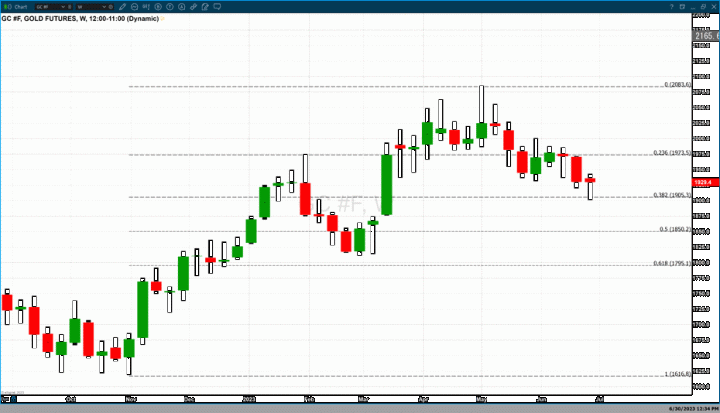
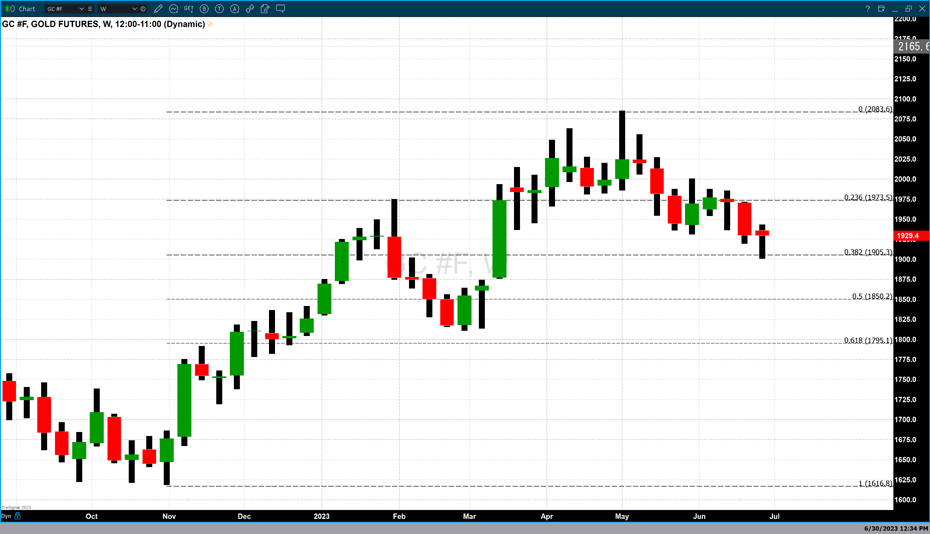





.png)
.png)
.png)




(28).gif)

.jpg)


.jpg)
.jpg)
.jpg)

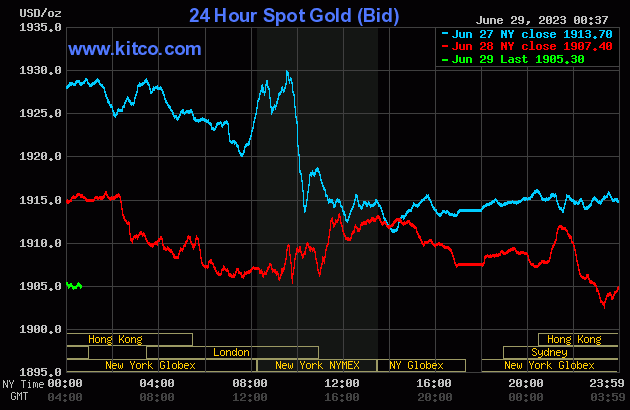
 State Street Global Advisors sees healthy demand for gold and investors are getting younger
State Street Global Advisors sees healthy demand for gold and investors are getting younger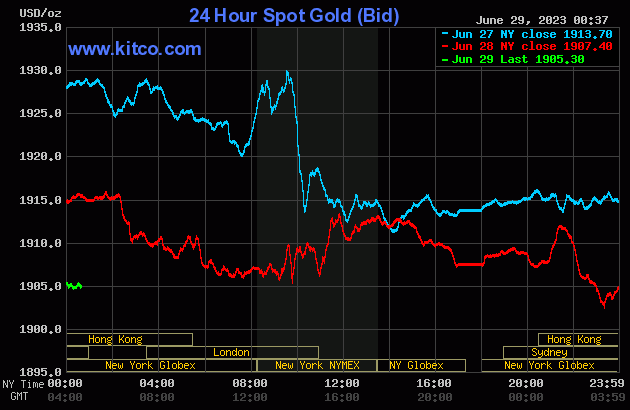
.gif)
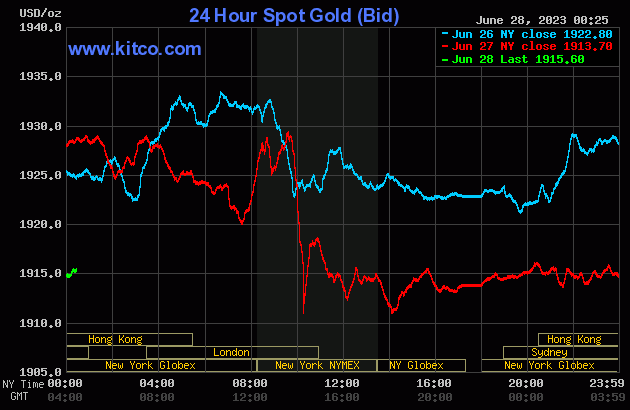
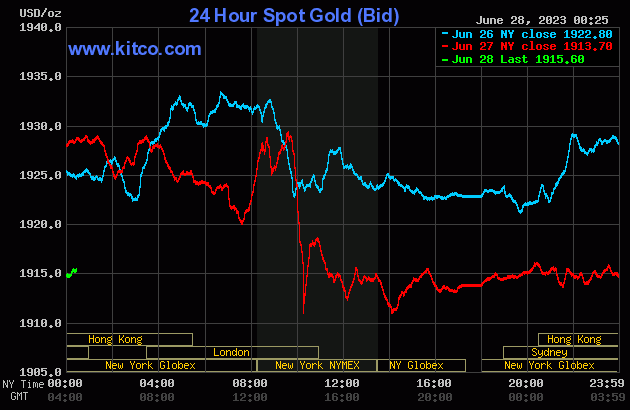
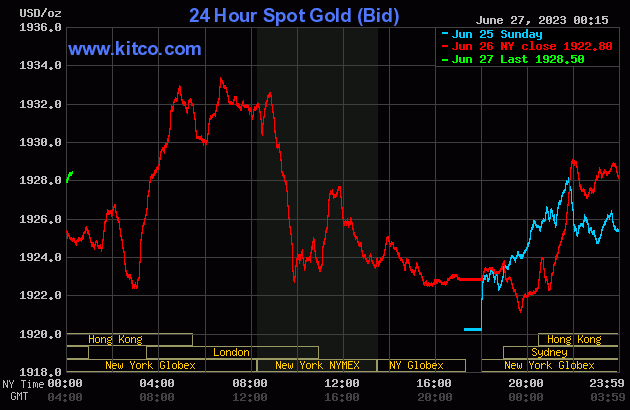
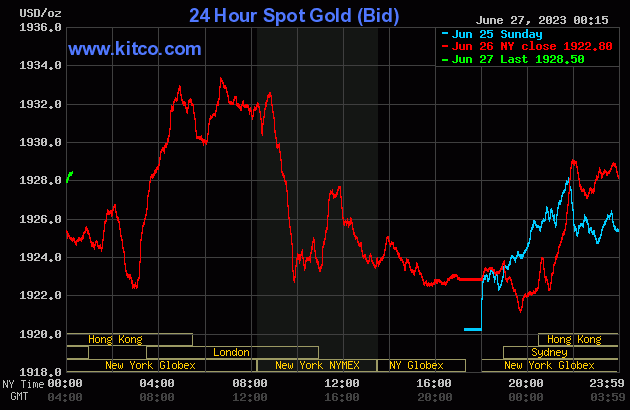
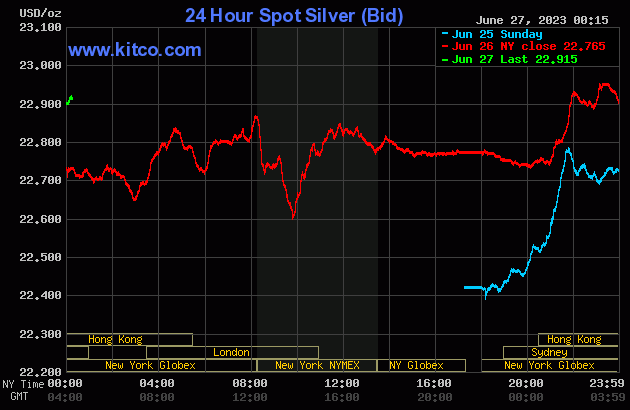
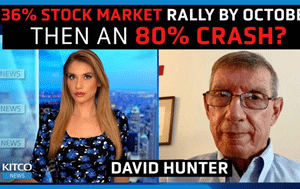
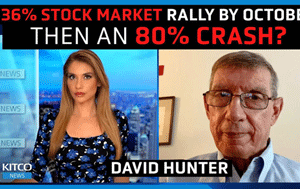 Gold will reach $3k in market 'melt up' with S&P 500 up at least 36% by Q4 2023 – David Hunter
Gold will reach $3k in market 'melt up' with S&P 500 up at least 36% by Q4 2023 – David Hunter